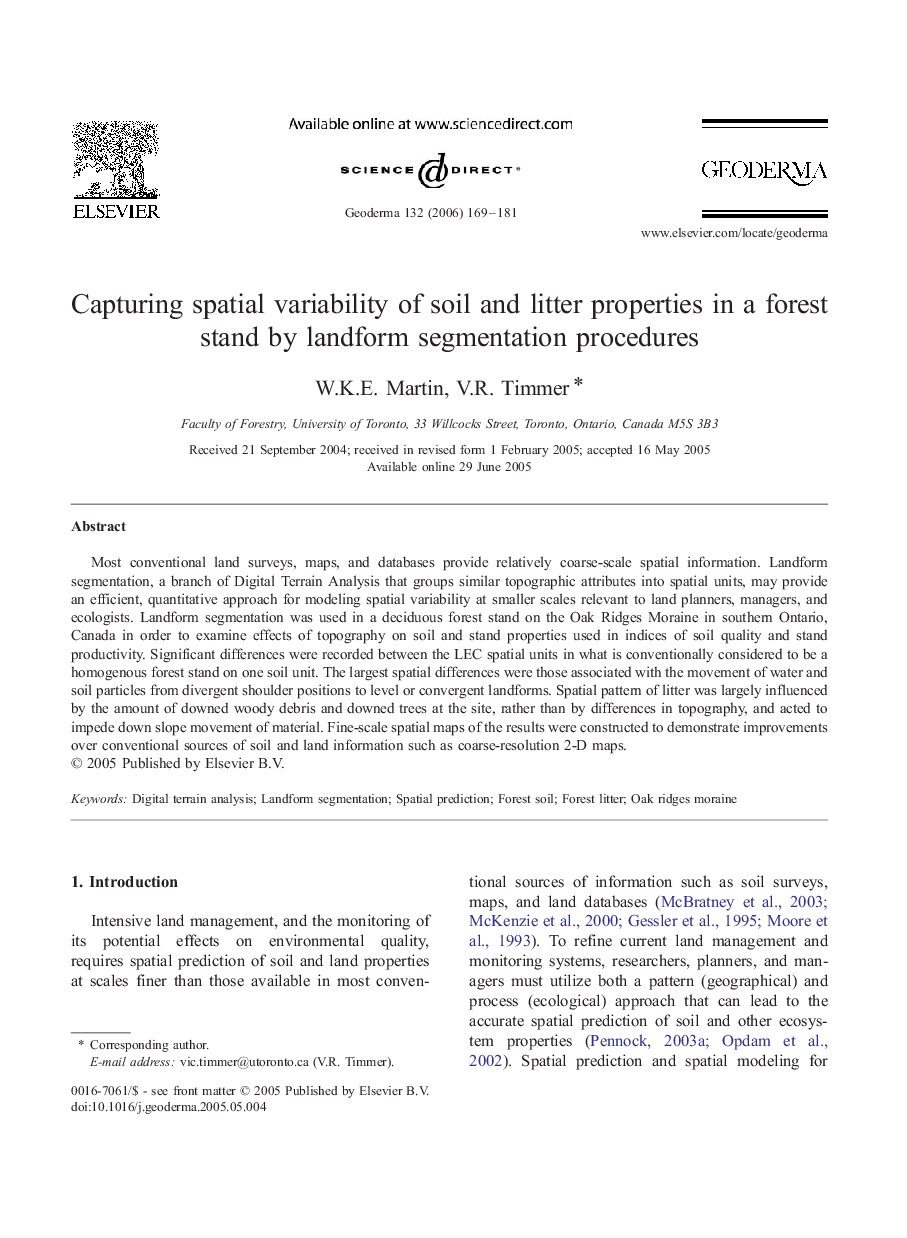| Article ID | Journal | Published Year | Pages | File Type |
|---|---|---|---|---|
| 4575774 | Geoderma | 2006 | 13 Pages |
Abstract
Most conventional land surveys, maps, and databases provide relatively coarse-scale spatial information. Landform segmentation, a branch of Digital Terrain Analysis that groups similar topographic attributes into spatial units, may provide an efficient, quantitative approach for modeling spatial variability at smaller scales relevant to land planners, managers, and ecologists. Landform segmentation was used in a deciduous forest stand on the Oak Ridges Moraine in southern Ontario, Canada in order to examine effects of topography on soil and stand properties used in indices of soil quality and stand productivity. Significant differences were recorded between the LEC spatial units in what is conventionally considered to be a homogenous forest stand on one soil unit. The largest spatial differences were those associated with the movement of water and soil particles from divergent shoulder positions to level or convergent landforms. Spatial pattern of litter was largely influenced by the amount of downed woody debris and downed trees at the site, rather than by differences in topography, and acted to impede down slope movement of material. Fine-scale spatial maps of the results were constructed to demonstrate improvements over conventional sources of soil and land information such as coarse-resolution 2-D maps.
Related Topics
Physical Sciences and Engineering
Earth and Planetary Sciences
Earth-Surface Processes
Authors
W.K.E. Martin, V.R. Timmer,
